#airport thermal scanners
Explore tagged Tumblr posts
Text
#COVID19 cases jumped to 32,000 in the week ending Dec 2, up from 22,000 the previous week in Singapore prompting calls for the return of #facemasks while airport thermal scanners are reinstalled in Indonesia due to resurgence of respiratory infections.
instagram
0 notes
Text
Body Scanner Market Size, Share, Trends, Growth and Competitive Outlook
"Body Scanner Market – Industry Trends and Forecast to 2030
Global Body Scanner Market, By Product (Ground-Mounted Scanner, Vehicle-Mounted Scanner), Technology (3D Body Scanners, Image Processing, and Modelling), System (Millimeter Wave, Backscatter), Application (Transport, Infrastructure, Others), End User (Industrial, Public, Prisons) - Industry Trends and Forecast to 2030.
Access Full 350 Pages PDF Report @
**Segments**
- **Type**: The body scanner market can be segmented by type into X-Ray Scanner, Millimeter Wave Scanner, and Others. X-Ray scanners use X-rays to create images of the body, while millimeter wave scanners use radio waves to detect objects hidden under clothing. The other segment may include thermal scanners or other innovative technologies for body scanning.
- **Technology**: Under technology, the market can be divided into Hardware and Software. Hardware includes the physical scanning devices, such as sensors and scanners, while software involves the programs used to process and analyze the scan results. Both hardware and software play crucial roles in the effectiveness of body scanners.
- **Application**: Body scanners have various applications, including Transportation, Healthcare, and Others. In transportation, they are used for security screening at airports, train stations, and other public areas. In healthcare, body scanners are utilized for medical imaging purposes and detecting health issues. The 'Others' category may include industrial applications or specific niche uses for body scanners.
**Market Players**
- **Smiths Group PLC**: Smiths Group is a key player in the body scanner market with a range of security scanning solutions, including body scanners for transportation security and other applications. The company is known for its innovative technologies and global presence in the security industry.
- **Rapiscan Systems**: Rapiscan Systems offers advanced security screening solutions, including body scanners, for aviation, customs, and border control. The company provides a wide range of scanning systems to meet the diverse needs of customers worldwide.
- **L3Harris Technologies, Inc.**: L3Harris is a leading provider of security and detection systems, including body scanners, for various applications. The company's advanced technologies and solutions are used in critical security environments to ensure safety and security.
- **ADANI Systems**: ADANI specializes in developing cutting-edge X-ray body scanners for security screening purposes. The company's innovative technologies and solutions cater to the evolving needs of the security industry.
TheThe body scanner market is witnessing significant growth and innovation, driven by the increasing focus on security and safety across various sectors. The segmentation of the market based on type, technology, and applications provides a comprehensive understanding of the different aspects of body scanners. The type segment, comprising X-Ray scanners, Millimeter Wave scanners, and other innovative technologies, reflects the diverse range of scanning solutions available in the market. X-Ray scanners offer detailed images of the body, while Millimeter Wave scanners use radio waves for hidden object detection, catering to different security needs. The technology segment splits the market into hardware and software components, emphasizing the importance of both physical scanning devices and analytical programs in enhancing the overall efficiency and accuracy of body scanners.
In terms of applications, body scanners find extensive use in transportation, healthcare, and other sectors. The transportation industry relies on body scanners for security screening at airports, train stations, and other high-traffic areas to ensure passenger safety and prevent threats. In healthcare, body scanners play a crucial role in medical imaging and diagnostics, contributing to early disease detection and treatment planning. Additionally, the ""Others"" category signifies the potential for body scanners in industrial settings or specialized niche applications, highlighting the versatility and adaptability of these advanced scanning technologies.
The market players in the body scanner industry, such as Smiths Group PLC, Rapiscan Systems, L3Harris Technologies, Inc., and ADANI Systems, are at the forefront of driving innovation and technological advancements in security scanning solutions. These companies offer a wide range of products and services tailored to meet the evolving needs of customers in various sectors. Smiths Group PLC is renowned for its global presence and innovative approach to security scanning, while Rapiscan Systems specializes in advanced screening solutions for aviation and border control. L3Harris Technologies, Inc., stands out for its cutting-edge security and detection systems, including body scanners, designed for critical security environments. ADANI Systems, with its focus on X-ray body scanners, addresses the growing demand for**Global Body Scanner Market, By Product (Ground-Mounted Scanner, Vehicle-Mounted Scanner), Technology (3D Body Scanners, Image Processing, and Modelling), System (Millimeter Wave, Backscatter), Application (Transport, Infrastructure, Others), End User (Industrial, Public, Prisons) - Industry Trends and Forecast to 2030.**
The global body scanner market is experiencing significant growth and development, driven by the increasing emphasis on security measures across various industries. The segmentation of the market based on product, technology, system, application, and end-user provides a comprehensive view of the diverse uses and advancements in body scanning technologies. Ground-mounted scanners and vehicle-mounted scanners cater to different mobility requirements and security needs, allowing for efficient screening in various settings. The adoption of advanced technologies like 3D body scanners and image processing enhances the accuracy and effectiveness of body scanning, enabling detailed imaging and analysis of scanned results. Systems such as millimeter wave and backscatter offer different approaches to body scanning, each with its strengths in detecting concealed items and ensuring security protocols.
In terms of applications, body scanners play a crucial role in transportation, infrastructure, and other sectors, contributing to enhanced security measures and threat detection. The transportation industry extensively relies on body scanners for security screening at airports, seaports, and other transit hubs to safeguard passengers and prevent potential threats. Infrastructure applications involve the use of body scanners in critical installations and public spaces to maintain security protocols and deter unauthorized activities. The versatility
Body Scanner Key Benefits over Global Competitors:
The report provides a qualitative and quantitative analysis of the Body Scanner Market trends, forecasts, and market size to determine new opportunities.
Porter’s Five Forces analysis highlights the potency of buyers and suppliers to enable stakeholders to make strategic business decisions and determine the level of competition in the industry.
Top impacting factors & major investment pockets are highlighted in the research.
The major countries in each region are analyzed and their revenue contribution is mentioned.
The market player positioning segment provides an understanding of the current position of the market players active in the Personal Care Ingredients
Table of Contents: Body Scanner Market
1 Introduction
2 Global Body Scanner Market Segmentation
3 Executive Summary
4 Premium Insight
5 Market Overview
6 Body Scanner Market, by Product Type
7 Body Scanner Market, by Modality
8 Body Scanner Market, by Type
9 Body Scanner Market, by Mode
10 Body Scanner Market, by End User
12 Body Scanner Market, by Geography
12 Body Scanner Market, Company Landscape
13 Swot Analysis
14 Company Profiles
Critical Insights Related to the Keyword Included in the Report:
Exclusive graphics and Illustrative Porter’s Five Forces analysis of some of the leading companies in this market
Value chain analysis of prominent players in the market
Current trends influencing the dynamics of this market across various geographies
Recent mergers, acquisitions, collaborations, and partnerships
Revenue growth of this industry over the forecast period
Marketing strategy study and growth trends
Growth-driven factor analysis
Emerging recess segments and region-wise market
An empirical evaluation of the curve of this market
Ancient, Present, and Probable scope of the market from both prospect value and volume
Browse Trending Reports:
Recreational Cannabis Market Paediatric Gliomas Drugs Market Zinc Glycinates Market Restriction Endonucleases Products Market Food Grade Gases In Meat And Seafood Application Market Temperature Smart Roads Market Automotive Airbag Silicone Market Non Networked Sound Masking System Market Nitrile Butadiene Rubber Br Market Big Data As a Service Bdaas Market Robotically Assisted Surgical Devices Market Transactional Video Demand Market Rice Transplanter Market Bio Based Polyethylene Terephthalate Pet Packaging Market Bath Mats Market Synthetic Iron Oxide Pigments Market Polyvalent Anti Venom Market Managed Siem And Log Management Market
About Data Bridge Market Research:
Data Bridge set forth itself as an unconventional and neoteric Market research and consulting firm with unparalleled level of resilience and integrated approaches. We are determined to unearth the best market opportunities and foster efficient information for your business to thrive in the market. Data Bridge endeavors to provide appropriate solutions to the complex business challenges and initiates an effortless decision-making process.
Contact Us:
Data Bridge Market Research
US: +1 614 591 3140
UK: +44 845 154 9652
APAC : +653 1251 975
Email: [email protected]"

0 notes
Text
Automatic Sliding Doors: A Game-Changer in Modern Architecture
Automatic sliding doors are no longer a luxury feature found only in high-end establishments or hotels. They have become a staple in modern architecture, offering an elegant and efficient solution for various commercial, residential, and public spaces. With advancements in technology and growing demand, these doors are now accessible for a wide range of applications, providing convenience, enhanced security, and energy savings.
But beyond these features, what do automatic sliding doors cost? Let’s dive into the various factors that influence their pricing, so you can better understand the total investment required for this modern innovation.
What Are Automatic Sliding Doors?
Automatic sliding doors are doors that open and close automatically without manual effort, typically through the use of sensors or buttons. These doors consist of sliding panels that glide along tracks, making them ideal for locations with limited space or areas that experience heavy foot traffic. They are commonly found in shopping malls, airports, hospitals, and office buildings but are also increasingly popular in residential settings.
How Do They Work?
The functionality of automatic sliding doors revolves around several key components:
Motion Sensors: These are the most critical parts of the door mechanism. When a person approaches, sensors detect movement and signal the doors to open. The sensors are usually positioned on the sides or at the top of the doorway.
Door Operators: These are the driving force behind the door's movement. Once the sensor signals the operator, it activates the motor to slide the door open or shut.
Safety Sensors: These sensors ensure that the doors don't close on someone standing in the threshold. In some advanced systems, sensors detect when a person or object is too close, and they prevent the doors from closing until the space is clear.
Control System: The control panel manages the opening and closing speeds, door sensitivity, and other programmable settings. This is where you can customize the door’s functionality according to the specific needs of the location.
Benefits of Automatic Sliding Doors
1. Convenience and Accessibility
One of the main reasons why automatic sliding doors are so popular is the ease of access they provide. For individuals with disabilities, the elderly, or people carrying heavy objects, these doors allow for effortless entry and exit without needing to push or pull.
2. Space Efficiency
Traditional doors can swing open into rooms, requiring clear space to operate. In contrast, automatic sliding doors glide parallel to the walls, allowing more usable space within a room or hallway. This is particularly beneficial in crowded environments or where design efficiency is crucial.
3. Enhanced Security
Modern automatic sliding doors can be integrated with advanced security systems. This includes key card access, fingerprint scanners, and remote monitoring, offering better control over who enters or exits a facility. Many businesses opt for this as it adds an extra layer of security.
4. Energy Savings
Automatic sliding doors can significantly improve energy efficiency by reducing air leakage. In commercial buildings, where heating and cooling costs can add up, these doors help to maintain a consistent indoor temperature by quickly opening and closing as needed. Advanced models even have thermal insulation features to further minimize energy loss.
5. Aesthetic Appeal
Sleek and modern, automatic sliding doors offer a clean and professional appearance that can elevate the look of any building. With customizable options for materials and designs, they can easily blend with the architectural style of the space, whether contemporary or traditional.
Factors Influencing the Price of Automatic Sliding Doors
The cost of installing automatic sliding doors varies widely depending on several factors. While some basic models might be affordable, advanced systems with premium features and materials can drive up the price significantly. Here are the primary factors that affect the cost:
1. Type of Door Mechanism
Automatic sliding doors come in different variations, each with its own price point:
Single-Slide Doors: These are the most basic types, where one door panel slides in one direction. They tend to be more affordable compared to other types.
Bi-Parting Doors: Here, two doors slide in opposite directions, creating a wider opening. These doors are more expensive due to their added complexity.
Telescoping Doors: For locations with limited wall space, telescoping doors are ideal. They consist of multiple sliding panels that stack neatly, allowing for a large opening even when space is constrained. However, they are generally more expensive than single-slide or bi-parting doors.
2. Material Used
The material used for the door panels significantly affects the overall price. Common materials include:
Glass: Glass is the most popular material for automatic sliding doors, as it provides visibility and a modern aesthetic. Tempered glass or laminated glass can increase costs due to their durability and safety features.
Metal: Doors with metal frames, such as aluminum or stainless steel, are often more durable and secure but can be more expensive depending on the finish and customization.
Wood: For residential applications or places that demand a traditional look, wood sliding doors are available. However, they are typically more expensive due to their weight and the additional support required.
3. Size and Customization
The size of the door plays a large role in determining the cost. Larger doors naturally require more materials and labor to install. Customizations, such as specialized glass treatments (tinted, frosted, or decorative), unique finishes, or additional security features, can also increase the price.
4. Installation Complexity
The cost of labor and installation is another significant factor. If the installation site has unusual architectural requirements or needs extra construction work (such as creating a wider opening or adding electrical wiring for sensors), the price will rise.
For example, retrofitting an old building with automatic sliding doors may involve removing existing structures, rerouting wiring, and ensuring the structural integrity to support the new system.
5. Additional Features
Many modern automatic sliding doors come with advanced features that can add to the cost:
Remote Access Control: This allows users to open or close the doors remotely, useful in security-sensitive locations.
Advanced Safety Sensors: More sophisticated sensor systems can detect even the smallest obstructions, ensuring maximum safety.
Weather Resistance: Doors designed for outdoor use in harsh climates come with additional features like weather sealing, which can increase their price.
6. Brand and Warranty
Well-known brands typically offer higher-quality products, but they also come at a premium. However, opting for a reputable brand often ensures better customer support, longer warranties, and greater reliability in the long run.
Pricing Overview
Given the wide variety of factors influencing the price, here’s a general breakdown of what you can expect to pay for different types of automatic sliding doors:
Basic Single-Slide Doors: $1,500 - $3,000
Bi-Parting Doors: $3,000 - $5,500
Telescoping Doors: $5,000 - $10,000+
Custom Materials and Features: Add an additional 20-40% on top of the base price.
Labor and installation costs typically range from $1,000 to $3,500, depending on the complexity of the project. For a commercial project, additional costs may include permits, architectural planning, and electrical work, which could add up to another $1,000 to $5,000.
Conclusion
Automatic sliding doors are an excellent investment for anyone looking to modernize their building, improve energy efficiency, and enhance the overall user experience. While they come with an upfront cost, the long-term benefits in terms of convenience, security, and energy savings make them a worthwhile addition. When considering the price, it's important to factor in not only the type and features of the door but also the long-term durability and functionality that they provide.
0 notes
Text
Understanding Automatic Sliding Doors: Features, Benefits, and Pricing Guide
Automatic sliding doors have become a common feature in commercial buildings, retail outlets, hospitals, airports, and even some modern homes. Their seamless operation and sleek design provide a convenient entry and exit solution while enhancing the overall aesthetics of a space. These doors operate using motion sensors or access control systems, allowing for hands-free functionality, making them particularly appealing in high-traffic areas.
In this article, we will explore the features, benefits, and pricing of automatic sliding doors, offering insight into why they are a worthwhile investment for both commercial and residential properties.
Features of Automatic Sliding Doors
Motion Sensors for Seamless OperationAutomatic sliding doors are equipped with motion sensors that detect movement, triggering the door to open and close automatically. This feature is essential in areas with high foot traffic, as it allows for a smooth and efficient flow of people without the need for physical contact. It is especially beneficial in environments where hygiene is a priority, such as hospitals, restaurants, or laboratories.
Customizable Design and Aesthetic Appeal These doors come in a variety of styles and materials, including glass, aluminum, steel, and wood. Depending on the design of your building, automatic sliding doors can be customized to suit modern or traditional architectural aesthetics. Whether you want a minimalist, frameless glass door for a sleek commercial look or a more robust steel frame for added durability, there are many options to match the décor and functional requirements of your space.
Energy Efficiency and Insulation Many automatic sliding doors are designed with energy efficiency in mind. By sealing tightly when closed, they help maintain interior temperatures, reducing the need for heating and air conditioning. Some models even feature double-glazed or insulated glass to further improve thermal insulation, making them an eco-friendly option that contributes to lower energy bills.
Safety Features Automatic sliding doors are equipped with advanced safety sensors to prevent accidents. These sensors detect objects or people in the doorway and stop the door from closing to avoid injury. Additionally, many models include an emergency release mechanism that allows manual operation in case of power failure, ensuring safety in all situations.
Access Control Integration For commercial and high-security environments, automatic sliding doors can be integrated with access control systems, such as keypads, card readers, or biometric scanners. This feature ensures that only authorized individuals can enter specific areas, making it ideal for office buildings, banks, and other sensitive locations.
Benefits of Automatic Sliding Doors
Improved AccessibilityAutomatic sliding doors provide enhanced accessibility, making them ideal for properties that cater to people with disabilities, the elderly, or families with children. With no need to push or pull, these doors offer hands-free convenience, allowing everyone to enter and exit smoothly. This feature is particularly important in hospitals, retail stores, and public buildings where easy access is a priority.
Efficient Traffic Flowing busy environments such as airports, malls, or large offices, automatic sliding doors help manage the flow of people efficiently. They open and close automatically as needed, ensuring that there are no bottlenecks or delays during peak hours. The smooth and swift operation of these doors contributes to a better user experience, improving the functionality of the space.
Hygiene and CleanlinessOne of the key advantages of automatic sliding doors is the hygiene factor. Since these doors operate without physical contact, they reduce the spread of germs and bacteria, making them ideal for hospitals, clinics, restaurants, and other places where cleanliness is a top priority. During pandemics or flu seasons, hands-free entry and exit contribute significantly to maintaining a healthier environment.
Energy SavingsAutomatic sliding doors help conserve energy by minimizing the amount of time they are open, reducing the loss of heated or cooled air. With insulated and tightly sealed door designs, they prevent drafts, improving the overall energy efficiency of the building. This leads to reduced utility bills, especially in large commercial properties where climate control is a significant cost factor.
Aesthetic EnhancementAutomatic sliding doors add a touch of modernity and sophistication to any building. Their sleek, streamlined appearance enhances the overall look of the entrance, making the property more inviting. Whether in a high-end retail store, luxury hotel, or office complex, these doors create a positive first impression that resonates with customers, clients, and visitors.
Increased Security For commercial spaces, security is a primary concern. Automatic sliding doors integrated with access control systems ensure that only authorized personnel can access certain areas. This not only prevents unauthorized entry but also offers a secure, locked barrier during non-business hours. Some models also include reinforced glass or frames for added security, making them more resistant to forced entry or vandalism.
Pricing of Automatic Sliding Doors
The price of automatic sliding doors can vary widely depending on factors such as size, material, customization, and additional features like insulation or access control systems. Below is a breakdown of the typical cost considerations:
Material and Design The choice of material significantly impacts the price. For instance:
Basic aluminum frame with glass: $2,000 to $5,000 per unit
High-end frameless glass models: $5,000 to $10,000
Steel or wood designs: $3,500 to $8,000The aesthetic design and finishing, such as custom etching on glass or specific color finishes on frames, can also influence the cost.
Size and Complexity Larger doors, such as those used for entrances to malls or industrial buildings, will cost more due to the materials required and the complexity of the installation. Standard single-door units may range between $2,500 and $5,000, while larger, double-door or custom-sized systems can cost upwards of $10,000.
Automation and Features The technology behind the door operation also plays a role in pricing:
Basic automatic sliding doors (with standard sensors and basic safety features): $2,000 to $4,000
Advanced models (with access control, advanced safety sensors, and smart integration): $5,000 to $10,000For businesses requiring specialized features like fire-rated doors, impact resistance, or enhanced insulation, prices can increase by another 20% to 50%.
Installation Costs Installation is another critical cost component. The complexity of installation varies depending on the existing structure and whether electrical wiring or additional construction is needed to accommodate the door. Installation typically ranges from $1,000 to $3,000, depending on the project’s scale.
Maintenance Costs While automatic sliding doors are generally low maintenance, occasional servicing is required to ensure smooth operation and longevity. Maintenance packages can cost between $150 and $500 annually, depending on the door's complexity and the service provider.
Conclusion
Automatic sliding doors offer a range of benefits, including enhanced accessibility, energy efficiency, and improved aesthetics, making them an excellent choice for both commercial and residential properties. While the initial cost can vary depending on the materials, design, and features, their long-term advantages often outweigh the upfront investment. By providing a modern, convenient, and secure solution, automatic sliding doors not only improve functionality but also add value to any space. Whether you're upgrading your commercial entrance or installing them in a high-traffic area, automatic sliding doors are a smart, forward-thinking addition to your property.
0 notes
Text
Thermal Scanners Market Opportunities And Key Insights 2030
The global Thermal Scanners Market size is estimated to grow from USD 4.1 billion in 2020 to USD 6.2 billion by 2025, at a CAGR of 8.6%. Increasing government expenditure on the aerospace & defense sector is one of the factors fueling the growth of this market.
Key Players: FLIR Systems, Inc. (US), Fluke Corporation (US), Leonardo S.p.A. (Italy), L3HARRIS TECHNOLOGIES, INC. (US), and Opgal (Israel), are the key players in the thermal scanners market.
Download PDF Brochure: https://www.marketsandmarkets.com/pdfdownloadNew.asp?id=49318625
Market for uncooled technology-based thermal products accounted for a larger share of thermal scanners market in 2019
The market for uncooled thermal products accounted for a larger share of the thermal scanners market in 2019. The growth of this market is attributed to the increasing demand for uncooled thermal solutions for commercial applications. Furthermore, the availability of HD resolution makes uncooled thermal solutions an ideal solution for high-resolution applications, such as military security and surveillance, industrial detection, and automotive diagnostic. Moreover, they offer long-time services due to the presence of less moving parts.
Market for SWIR thermal products expected to grow at highest CAGR during the forecast period
The SWIR segment is projected to lead the thermal scanners market with the highest CAGR from 2020 to 2025. The growth is anticipated due to several advantages offered by SWIR, such as the ability to see through a glass, availability in small size, and ability to see the covert laser. Moreover, as the technological advancements and efforts to launch new low-priced SWIR cameras, is likely to increase the penetration of SWIR cameras in thermal scanning systems.
Thermography application accounted for the largest share of thermal scanners market in 2019
The thermography application held the largest share of the thermal scanners industry in 2019. The growth is attributed to the rising use of thermal scanners at airports due to the outbreak of coronavirus and the increasing government expenditure in the military sector. According to the Stockholm International Peace Research Institute (SIPRI), in 2018, the global military expenditure was USD 1,822 billion, which increased by 2.6% compared to 2017.
APAC is expected to grow at highest CAGR during the forecast period
APAC is expected to grow at the highest CAGR during the forecast period. The growth of the thermal scanners market in APAC is attributed to the presence of regional vendors in China and India, offering low-cost solutions, which in turn causes a decline in prices of thermal scanning products. Additionally, the increase in mass production of the thermal scanners in China supports the growth of the market along with the presence of several OEMs. The rising demand for thermal scanners due to the outbreak of coronavirus in various regions in the APAC region mainly in China, Japan, and South-East Asian countries, would further fuel the growth of the market.
0 notes
Text
Biometric Smart Door Locks And Keyless Entry
Fingerprint locks, also called biometric locks, let you enter a place without using keys. These locks use your fingerprints to work and are found in many spots like houses, offices, airports, and cars.
How Biometric Locks Work
With biometric locks, you don't need keys anymore. To open them, you just touch your fingers to the lock. It's super quick. If someone no longer needs access, you can delete their code, and they won't be able to get in anymore.
Fingerprint locks use special scanners, like thermal or optical ones. They can use fingerprints, a PIN code, or both. When you touch the scanner, it remembers your fingerprint because each person's fingerprint is unique. If it's a two-step lock, you also need to type in a code after your fingerprint is recognized. The lock resets after a while, and you'll need to enter the code again to unlock it.


You can control biometric locks in person or even from far away using your phone. There are different types of biometric locks, like deadbolt locks and network locks. They come in various colors to match your place. Some even have alarms in case of intruders. These locks are strong and can handle dust and water. If something goes wrong or the battery dies, you can use tag keys to get in.
One downside is that if your finger has a cut or scar, the lock might not recognize your fingerprint. So, it's essential to keep your finger healthy, or you'll have to use the code or a key.
Installing biometric locks is quite simple, but it must be done correctly for safety. Professional locksmith in Gastonia can help you with that and offer a warranty for any future problems. It's essential to make sure your lock works correctly to keep you and your family safe.
0 notes
Text
Contraband Detectors Market: Advancements in Security Technology
In today's fast-paced world, ensuring safety and security has become a top priority across various sectors, including transportation, law enforcement, and critical infrastructure. One key aspect of security measures is the detection of contraband items, such as explosives, weapons, drugs, and illegal substances. To address these challenges, The Contraband Detectors Market has witnessed significant advancements in technology, providing efficient and reliable solutions to identify hidden threats. This blog explores the latest trends, innovations, and market dynamics in the contraband detectors industry.
Rising Security Concerns: With the increasing instances of terrorism, smuggling, and illicit activities, there is a growing demand for robust security solutions. Contraband detectors play a crucial role in preventing threats by scanning individuals, luggage, and vehicles to identify concealed items. These devices are deployed in airports, seaports, border checkpoints, correctional facilities, and public venues to ensure public safety and safeguard critical assets.
Technology Advancements: The contraband detectors market has witnessed remarkable advancements in technology, enhancing detection accuracy and operational efficiency. Traditional metal detectors have evolved into multi-modal devices that integrate multiple scanning technologies, including X-ray, millimeter wave, thermal imaging, and chemical detection. These integrated systems provide comprehensive screening, enabling security personnel to detect a wide range of contraband items effectively.
Multi-modal Detection Systems: Contraband detectors now employ a combination of detection techniques to overcome limitations and increase detection rates. For example, X-ray scanners are highly effective in identifying weapons and explosives, while millimeter-wave scanners are proficient in detecting concealed objects on individuals. By combining these technologies, contraband detectors deliver a more comprehensive screening process, reducing false positives and ensuring higher accuracy.
Artificial Intelligence and Machine Learning: The integration of artificial intelligence (AI) and machine learning (ML) algorithms has revolutionized contraband detection capabilities. These intelligent systems can analyze vast amounts of data and identify suspicious patterns or anomalies in real-time. AI-powered contraband detectors can learn from previous detection instances, continuously improving their accuracy and reducing human error. This technology significantly enhances security personnel's ability to identify and respond to potential threats swiftly.
Portable and Mobile Solutions: The demand for portable and mobile contraband detectors has been on the rise, especially in law enforcement and border control scenarios. Handheld devices and lightweight scanners enable rapid screening in remote locations, transportation hubs, and public events. These portable solutions offer convenience and flexibility, allowing security personnel to conduct on-the-spot inspections without impeding the flow of people or disrupting operations.
Integration and Connectivity: Contraband detectors are increasingly designed to seamlessly integrate with existing security systems, such as access control systems, surveillance cameras, and alarm systems. This integration enables real-time data sharing and enhances situational awareness, allowing security personnel to respond effectively to potential threats. Moreover, connected contraband detectors can generate valuable insights and analytics, aiding in post-incident investigations and improving overall security management.
Market Outlook: The contraband detectors market is projected to experience substantial growth in the coming years. The rising security concerns, stringent government regulations, and the need for advanced screening technologies are driving market expansion. Key market players are investing in research and development activities to introduce innovative and efficient contraband detection solutions. Additionally, increased adoption in sectors like aviation, transportation, and critical infrastructure will fuel market growth.
Conclusion: As security threats continue to evolve, the contraband detectors market plays a critical role in safeguarding public safety and protecting valuable assets. The integration of advanced technologies, such as AI, ML, and multi-modal detection systems, has significantly enhanced detection accuracy and operational efficiency. With the constant drive for innovation and increased adoption across various sectors, the contraband detectors market is poised for substantial growth, making the world a safer place for everyone. Order a free sample PDF of Contraband Detectors Market Research Intelligence Study, published by Market Research Future.
0 notes
Text
.
#The fact that the US is among the top 15 countries with confirmed cases and deaths from COVID19#and are doing virtually nothing to slow down the spread of the pandemic is beyond me#At this rate we’ll be the next italy.#Like the bare minimum of having thermal scanners in airports and canceling events can’t even be done?#Countries are on lock down all over the world.#Like wtf what will it have to take???? ugh why does our government suck so much.
34 notes
·
View notes
Photo

hyderabad news: thermal scanner installed at hyderabad international airport to bring fever victim’s address – thermal scanner installed at hyderabad international airport to find the person suffering from fever Hyderabad, August 2 (Language) A thermal scanner has been installed at the Hyderabad International Airport by the Central Government to detect a person suffering from fever.
#address#airport#bring#fever#find#Hyderabad#installed#international#news#person#scanner#suffering#thermal#victims
0 notes
Photo

Chennai airport tries out new thermal scanner | Chennai News CHENNAI: Chennai airport is trying out a thermal imaging sensor to gauge temperature of passengers walking into the departure terminal.
0 notes
Text
Resolution Through Dialogue (and fists if needed)
Story with Diabetic OC
Chapter II - 2,777 words
Chapter II
Theo was an agent for the FBI’s Criminal, Cyber, Response and Services Branch. She had been with her department for a decade after her recruitment after finishing her PhD in Microbiology at UC Berkeley where she and Chris met. She worked as an agent within the Critical Incident Response Group where she spent most of her days working under Unit Chief Lucas Secman and with a team of five other close agents, Daniel Penzias, Annalise Olivier, Jason Moran and Hugo Stoneward as a member of the Crisis Negotiation Unit. The team was closer than most due to the graphic, intense and often strange nature of their work, coupled with their strange hours and long days.
Today Theo walked into the office to everyone crowded around Jason’s desk, “What’s going on?” She asked as she approached the crowd. “Jason is showing everyone his new kitten” Daniel told her. Her coworkers turned to face her and parted to show her, the usually stone faced Agent Moran cradling a tiny black and white kitten, smiling down at it. “You got a cat?” She asked shocked, Moran had never seen like the pet type
“I found him while I was out running over the weekend, he was starving and stuck down a drain, I couldn’t leave him. Meet Derek”
Theo cooed at the kitten, scratching him behind the ears. Moran having rescued the cat made sense, the man had a paternal streak a mile wide, it was part of the reason he was such a good agent especially in cases involving children.
The scene was interrupted when Secman’s door swung open and the call of “conference room” alerted the agents to a new case. The group filed out of the bullpen and into the team’s designated conference room. Secman took his seat at the head of the table and handed files to each agent. Theo flipped hers open skimmed the details. Her heart began to sink. They were needed for a hostage negotiation at a middle school in Utah. There were at least three armed gunmen and an additional two armed students, as well as two suspected explosive devices. There was no time for discussion on the ground as Secman told Hugo to stay behind and liaise from Washington, and the rest of the team to grab their go-bags from their desks and meet in the Bureau jet in twenty. Theo and Daniel raced to their desks, each pulling a duffel bag from their places under their desks and giving each other a look. After their many years working together they had this routine down pat. He threw Theo his water bottle and she jogged to fill both of them up while he raided the kitchen for snacks. He grabbed a couple of mini bags of chips along with a pack of juice boxes for Theo and some granola bars for himself. They met back at their desks and ran through their mental checklists. Theo swore to herself under her breath and went back to the kitchen, grabbing three insulin vials out of the fridge followed by three infusion sets and a handful of test strips and slipping them in a refrigerated bag in her bag. Checking their watches the two grabbed their bags and joined Annalise in a Suburban as they headed to the airport, the rest of the team not far behind.
On board the jet the situation was tense. Theo had sent Chris a text right before they took off, briefing him on what she could and letting him know that she may not be home for a few days. The couple was relatively used to this situation and Chris had just wished her luck and told her to stay safe and that he hoped she’d be able to call that night. Hugo had gotten some more information out of the South Jordan Police Department. The school had approximately 1,400 students and of those, an estimated 1,200 were on campus. Most were supposedly congregated in the gym but smaller class-sized groups were spread throughout the main building. The local field office and bomb disposal squad were to meet them on the scene once the CNU had arrived. The small police department had been completely overwhelmed by the scale of the crisis and with hundreds of panicked parents, the team’s skills were desperately needed. Secman was in Unit Chief mode, designating roles for each team member so that they could hit the ground running. Hugo was running intel from his office in Washington and currently video chatting with the team on board. Jason was to handle the police department and bomb squad, getting information and forming a strategy. Daniel was going to liaise with the field office, Annalise needed to see what she could get from the parents who’s children were in contact with them as well as anyone else with potential information from inside the school. Finally, Secman and Theo were to set up a negotiation strategy with the offenders inside.
“We’re unlikely to get much sleep for the next 48 hours or so, so try to use the next three hours on here to nap” Secman informed the team signifying that the briefing was over. Theo and Daniel moved away from the table to one of the sofa-like set ups that lined the jet. All of the agents on the teams had become pros at sleeping when and were they could and within 15 minutes the jet was silent as most of the team slept. Theo was dozing when a sudden aggressive beeping jolted her to alert. As she began to move the weakness that signified a hypoglycaemic event made itself apparent along with the slight shake in her hands. From across the aisle Secman, not looking up from the mess of papers in front of him, tossed her a mini packet of skittles. She checked the number on her pump, 60mg/dl and tore open the packet pouring most of the skittles into her mouth. She grabbed her bottle of water out of her bag and began to sip on it. She sat there spaced out, eating skittles for about 15 minutes until Secman let her know that she was above 70 and handed her a granola bar. She shared the data from her CGM with her whole team in case something went dramatically wrong while working a case. It gave everyone more peace of mind that she had support if she needed it. Once her brain and body were finally back online she tried to catch some more sleep for the next few hours so that she was at her best once they landed.
The jet touched down in Salt Lake City at around lunch time and the team climbed straight into the provided cars for the 20 minute drive to South Jordan. Theo found herself headed to the school along with Jason, Annalise and Secman while another car took Daniel to the local field office. As soon as the car was put in park at the scene, agents poured out of the car, pulling their FBI bullet-proof vests over their heads. Annalise was escorted by the local PD to a group of parents sheltering in a taped-off area to begin assessing the situation, Jason was taken over to the current mission control and was soon commanding the attention of the various police officers and the kitted-up bomb squad. Secman strode off in the direction of a singular police car and FBI vehicle and Theo followed behind him.
“Unit Chief Lucas Secman of the CNU” he said shaking the hands of the local Chief of Police and a few local agents. “SSA Penzias” Theo introduced herself, doing the same. “We’re sorry that this has happened but we’re here to help”
“What’s the plan for negotiations?” Secman asked, skipping any further pleasantries and getting straight to the point “According to school records we have twelve hundred students from grades seven through nine. We have been approached by an offender who introduced himself as Allen but we have yet to extend any further contact beyond acknowledging them and getting a welfare guarantee”, the chief gave them the rundown. The agents nodded, “what about the students not in the gym? Do we have anything on them?” Theo asked.
“We have information from class records that suggests that most of the science classes have been locked in the laboratories”
“Ages?” Secman asked shortly, clearly wanting to get on with it.
“Mostly eighth and ninth graders” the chief responded. Secman turned to Theo,
“Get Stoneward on the line and get him to start trying to get some sort of satellite map of classes, if he can get a current thermal image even better” he turned to the chief, “we’re going to need a phone to contact the attackers inside as well as a line to the media, Agent Penzias will handle them”. While her boss continued to issue orders and get set up for negotiations, Theo pulled out her laptop and contacted Hugo. “Theo, what’s needed?” He asked, she could see his fingers racing across his keyboard as the monitors behind him showed current media coverage as well as satellite images and the police scanners for the county. “Lucas wants current satellite imagery, preferably thermal, we still don’t know where all of the students are located”
“On it” he responded, “I’ll set up a live capture and send it to your laptop”
“Thanks” she told him, walking back over to the group, “we’ll have a thermal and satellite livestream within a few minutes” she told Secman. He nodded in her direction, turning back to the local, Special Agent in Charge, “could you please contact the Hostage Rescue Team, I’m hoping we can do this through negotiation but I don’t want to risk the lives of these children if things go south”. The agent gave a sharp nod and walked away to do just that. The rest of the congregated officers and agents took that as their dismissal and most headed in different directions across the school’s parking lot leaving Theo, Secman and a few local agents huddled around Theo’s laptop, viewing Hugo’s livestreams and discussing potential tactics with the rest of the unit once Daniel arrived a few moments later. The unit decided to establish contact inside the school without waiting for Hostage Rescue but have them en route in the case of things going wrong. The team moved into action.
With Hugo’s voice and support filtering through their earpieces the CNU gathered around a squad car. Secman picked up the megaphone “I am Unit Chief Lucas Secman with the FBI’s Crisis Negotiation Unit and would like to talk to you. We will establish contact through the school’s phones”. With that he set down the megaphone and turned to Jason who handed him a phone with the school’s internal number already dialled. The dial tone sounded once, twice, three times before connecting, “Agent Secman I assume, my name is Samuel”, Secman shot a glance to the laptop where Hugo nodded to show that he was receiving the audio from the conversation, “good afternoon Samuel”, Hugo nodded again to show he had both ends of the call recorded. It wouldn’t have been obvious to those who didn’t know him, but the team watched as Hugo’s reassurance caused their supervisor to visibly relax. “How are the students?” Secman asked, a little more confidence in his stance. He was in command of the situation.
“The students are fine, agent. However, my associates and I are not. We feel like we’ve been ignored” the smug voice came down the line. Theo remained stone faced but internally grimaced at the man’s tone.
“How so?” Secman asked
“Well you see my friends and I have some demands that we’ve raised but no one has listened until now. We’ve been forced into drastic measures but it’s nobody’s fault but your own agent”
Theo shot a glance to her fellow agents and Moran gave her a nod. That was her signal. She snatched her laptop off the hood of the cruiser and walked swiftly to one of the Suburbans. This was an established routine and she heard the audio in her earpiece switch from Hugo’s office to Secman’s phone conversation as Hugo realised what was going on. Once in the car she routed Hugo’s voice chat through the laptop as he isolated their call from the other’s earpieces. They didn’t need the distraction. “Alright Stoneward let’s do this” she told Hugo as she opened another window on the laptop. “Let’s go through repeated police reports in the last three years in the South Jordan area”
“Once we’ve got those we can cross-check with the name Samuel to see what we’ve got”. Theo hummed as she texted Penzias the update and what they were doing. She pulled up the local PD’s records only to sigh when she realised what a mess they were. She heard an answering groan from the speakers as Hugo saw the same thing. “Alright, you take 2016, I’ll take 2017” she said, “focus on causes that people focus around, environmental issues, vandalism, gentrification things like that”. However, as the words came out her mouth she realised something. “Actually, you take the police complaints, I’m going to look into complaints made to the city”.
Samuel seemed to have gotten defensive and so Secman had switched tactics to appealing to the safety of the children. Theo pulled up the city’s records over the last five years, she searched for complaints made to council members, letters to the mayor and residential complaints. She cross-checked for repeated complaints and anything that involved the name Samuel. That brought back hundreds of names and motivations. She sighed at the sheer size of the task she seemed to be facing, but sat up and thought through how to reduce the results down to likely pools. She filtered by age of the complainant, setting the range to white men in their thirties to fifties. That dramatically reduced the number, it looked like many of the grievances were the local elderly, not that Theo found that surprising. Her phone beeped, Secman needed her back out in the negotiation so she quickly sent her reduced list to Stoneward with a note of where she was at and jogged back across the lot to the rest of her team.
Annalise grabbed her by the elbow, “so Secman has managed to get welfare checks and a name list of students in the school but he can’t make head or tail of why” she informed Theo, “he wants you to talk to him”. A shiver crawled up Theo’s spine at the thought of communicating with the creep who was placing so many children at risk but this was the job. She nodded at Annalise, “thanks for the rundown” she said and the two agents walked over. Secman raised an eyebrow at her, checking she knew what was going on. Theo just gestured for the phone and he handed it to her. “Samuel yes? This is Supervisory Special Agent Theo Wilson with the CNU, how are you today?”
“Skip the pleasantries agent, what are you after?” the man asked shortly, Theo winced internally but showed nothing. “I would like to know why you’re keeping the students hostage” she told him honestly, running through possible ways this conversation could go in the back of her mind. “I already told Lucas there, we’ve been forced into this”
“Forced? How so? I don’t assume anyone is holding you at gunpoint are they Sammy?” Theo asked. She saw Hugo’s head snap in her direction at the tone she was taking but Daniel held a hand up to the screen quieting him. There was a pause on the other end of the line, brief but enough to show the team that he’d been caught off guard by Theo’s approach. “You’re well aware then that we are the armed ones agent” the retort came.
“Of course you are, you couldn’t pull this off by yourself could you? No. You chose children because they’re easy to overpower. You have fellow conspirators because you could never do this alone” Theo further antagonised. “So now that we’ve established that you’re not the big intimidating man you think you are, how about we discuss this like adults instead of throwing, what appears to be, a large scale temper tantrum? Now. Would you like to discuss this with me? Or with Secman?” The pause on the other end was much longer this time. The silence seemed to last minutes. “You have five minutes to decide” she said and hung up.
Taglist
@diabets @diabadass-vs-the-world
#diabetic! reader#Diabetic fiction#t1d#Type 1 diabetes#criminal minds#OC#writing#type1diabetes#insulin pump#diabetes#novel#typeonediabetes#type one diabetes#actually diabetic
6 notes
·
View notes
Text
The Coronavirus outbreak
Ok, so I used to study medical microbiology and human toxicology (look how well I'm using my degrees) so outbreaks like this really spark my interest and worry
The R0 value hasn't been fixed. Some people are saying it's as low as 1.4 but there's an estimate going as high as 3.8 which is a bit more concerning.
The spread is also concerning. Looking at the reported cases of this versus the reported cases of saySARS, the current outbreak is more contagious. The mortality rate is being (I think) predicted at 3% which is not terrible (compared to say MERS) but not great.
The most worrisome thing for me is the asymptomatic period when people are contagious, the emerging cases of human to human transmission and the long incubation period
It irks me that isolation, quarantine etc was done only that stage and I wish some of the countries would be a bit more prudent. Thermal scanners at airports won't identify patients who are asymptomatic. Bringing back citizens from Wuhan is altruistic but proper initial quarantine measures should be planned to prevent infectious spread.
Some countries' health systems can handle it.
Some can't.
I'm not excited by the prospect of this entering India.
The good news? Some extrapolations show this peaking within the next two weeks so hopefully it will peter out soon
Takeaway message from all my rambling: don't panic, actions are being taken to curtail the spread.
But maintain hygiene, use hand sanitizer and if you're ill inform your health authorities.
11 notes
·
View notes
Text
Coming back to life after lock down!! Here’s a glimpse of how life could be after lock down
Globally the pandemic is still spreading like wildfire, and the number of people affected by Covid-19 has exceeded one million.
Covid-19 has changed over daily routines and lifestyles, all of us want our pre-covid days back and looking ahead for normal life once lockdown is lifted, as vaccine is still months away, things are not expected to be same anytime sooner.
With preventive measures like masks and social distancing here’s how life could be like after lock down ends-
Restaurants & Bars:
In order to keep customers and their employees safe restaurants are brainstorming solutions like reducing number of seats, drones for sanitizing or serving food with mask;
· Maybe menus will be disposable or laminated and disinfected after each use.
· Waiters would be wearing gloves and masks with extra sanitization or capacity measures.
· Limited number of seated orders with tables and chairs sanitized between dinners.
But the challenge dinners will be facing would be inability to wear face mask while eating, it could be riskier as coronavirus can transmit through droplets when u speak and breathe in addition to spreading via coughs and sneezes.
Airports:
· Dedicated staff with thermometers at all entry points and gates.
· Passengers to wear face mask and gloves post security and during your long flight.
· Social distancing at check-in counters with markings.
· Air lounges are likely to remain closed to help slow the spread of Covid-19.
· Limited meals and only bottled water to drink.
Some benefits like no middle seats, quite airports.
Metro:
· Hand sanitization/washing facility at entry points.
· Passengers to wear face masks and gloves.
· Thermal screening at entry points.
· Passengers to keep distance of 2 meters in the queue at the ticket counter.
· Use of Arogya setu app with in-built epass features for identification of Covid positive persons.
· Electronic and manual surveillance to be increased.
Cinemas:
Cinema halls may not be in the best position even after reopening, imagine how many people would go to cinemas after lockdown ends? Very few to none as people may take months to
Overcome their fears and enter crowded places; but on the other hand television entertainment will be back on track after lockdown as producers can start shooting and viewers have not gone anywhere.
· Intense sanitization of all cinema halls.
· Digital transactions for tickets, food and beverages.
· Social distancing within the cinema hall that means fewer tickets per screen.
Shopping malls:
Essential business such as grocery stores, pharmacies are open but shopping malls aren’t; Not every shop within the mall may open at once for instance individual retailers may keep their doors shut to help limit the spread of Covid-19.
· Shoppers will be encouraged to wear face mask and employees definitely will be.
· Store hours will be limited so cleaners can rigorously disinfect common areas and bathrooms.
· Say goodbye to trial rooms.
· Social distancing to be followed, minimum 6 foot distance between customers.
Schools & Universities:
How and when will the schools reopen? Big question is what type of setting will work with the kids mingling, playing and sharing lunches.
School closures are intensely stressful for many parents who are fearful their children may fall behind; high school seniors are worried about their grades and university admission.
Online learning is mantra of the day – parents, teachers and students are mentally preparing themselves, school administrators, teachers and government officials are brainstorming to create policies that keep students from potentially transforming the virus when school reopens’
With different range of policies around the world, some schools are shut for academic year while others are moving to reopen.
Denmark has reopened lower level schools with set of rules as distancing children’s desks, disinfecting toys, prohibiting sharing of food, and compulsory use of mask for both teachers and students.
According to UNESCO, 91 percent students- more than 1.5 billion children are impacted by school closures; the longer the closures the deeper the impact.
Offices:
Clearly, things are only going to get back to normal slowly; from employees getting back to work in crowded elevators to taking off food from communal canteen is not going to be acceptable for some time.
Massive cultural shift can be observed in future due to phone and video calls; say goodbye to the groomed work identity as you no longer need the same business wardrobe especially you don’t need business wardrobe below the waist with “social” use of zoom playing striking role with employees worldwide.
Mandatory guidelines for workplaces:
· Compulsory face mask.
· Social distanced desk.
· Provision for thermal scanner, hand wash, sanitizers preferably with touch free mechanism at all entry and exit points.
· Deep sanitization of entire workplace and common facilities.
· Employees above 65 years of age, pregnant women shall stay at home.
· Compulsory use of Arogya setu app.
· Large physical meetings will be avoided.
Some companies might call 50% of its employees to work in offices; some might call only essential employees while others might stick to work from home.
Anything we do when we exit lockdown is not without risk which is why proper strategy is required to make sure we are safe.
(Written by Raavya Sarda)
#lockdown#life after lockdown#schools after lockdown#cinema after lockdown#Restaurants & Bars after lockdown#offices after lockdown#blogstorymakers
2 notes
·
View notes
Text
How Air-Travel Could Look Like Post-Coronavirus

The travel and tourism industry is one of the sectors which had to face the brunt of closures and lockdown due to the outbreak of the coronavirus (COVID-19) pandemic. From soaring to an all-time high to plunging down into complete standstill, a lot has happened in two months. Millions of employees in the air travel sector – from those working in sales and services to those on the ground as marshals, hosts and mechanical staff, have all been affected with job loss. There are plenty of airlines that have to cut down on staff as their entire fleets had to be grounded for the last two months. It is not just the travel industry that is suffering, but passengers too. Many of the passengers who work abroad in different countries and planning to return home are still stuck in one place or the other. There are also people who lost their jobs but cannot return home, as air travel has almost entirely stopped across the world. Even at the dawn of May, light is still at the end of the tunnel and not within reaching distance. At this point in time, the future of air travel is still unknown, but it will most likely be pretty different from what it used to be. Let’s take a look into what we can possibly expect when traveling by air.
Bye-Bye to the Middle Seat
Social distancing is here to stay, and it is unlikely to see airlines stack up passengers in the same numbers as in the past. The easiest way to do this is probably by eliminating the middle seats from all the rows. It can either be taken off or used as a shared space for those on the window and aisle side. Such a step would ensure that there is adequate space between two people during a flight. Eliminating the middle seat can also help reduce the number of passengers in a flight, and thereby decrease person to person contact as well. Unless a vaccine, proven effective against the virus, is deployed, we can’t rule out possibilities of further outbreaks of the coronavirus. We must keep this in mind and maintain social distancing from the time we reach an airport.
Pre-Flight Medical Checkups
If you are a person who is notoriously always late at the airport when catching a flight, it would be best to start working on your punctuality. Leading airline Emirates has already introduced a blood test before one of their flights for all the passengers, and most of the other airlines will likely pick up on this. Such a trend also suggests that there could be even more medical checkups once full-fledged air travel returns (at least in the initial reopening months). Based on the popularity and passenger inflow of the flight you choose, this would mean that you would probably need to reach the airport well in advance to make sure you have enough time to do the tests and board the flight.
Don’t Forget to Bring your Health Card and Passports
Medical fitness is going to be a crucial factor for air travel from now on, and it will always be essential to keep an updated health card in possession. While thermal scanning seems to be an excellent alternative to confirm whether someone has temperature variation (the most common symptom related to fever), it could make things complicated, and cause unnecessary panic. There is also the possibility of more passengers being denied the right to fly even if they do not actually have the coronavirus. Thermal scanners are already available in airports, but it would probably take some time before they are readily available across all the airports. Updated health cards, on the other hand, provides a foolproof health status and saves time as well.
Spike in Domestic Air-Travel
Even though the initial response to coronavirus was less chaotic or worrying, it quickly changed when the disease started spreading like wildfire in Italy, Spain, and later in the U.S. as well. This, however, has introduced panic and anxiety among hundreds of people. It has also changed how people will select their travel destinations from now onwards. Checking out the impact of coronavirus in countries will be a norm for choosing a destination for future trips. We could also possibly see a rise in the number of people preferring domestic travel over international travel with hopes of avoiding any lockdowns in a foreign destination. You can check out some of the best deals for domestic travel (parking spots included) across the country here.
Hike in Airfares
The future of air travel, at least during the immediate future of reopening, would probably have airfares at a much higher price than what it used to be. A majority (if not all) of airlines have already been grounded indefinitely across the world, and there is a huge financial crisis across the entire air travel industry. Social distancing norms could also see aircraft with reduced seats (which means that airlines spend the same expense with less revenue). There could also be possible changes to refund policies of airlines with more companies preferring to give back vouchers instead of refunds for cancellations. However, customers are not impressed with the idea, and thousands of complaints have already been registered in this regard. The U.S. Department of Transportation (DOT) even issued a second warning to airlines after receiving nearly 25,000 air travel service complaints in March and April about cancelation refunds. “The department is asking all airlines to revisit their customer service policies and ensure they are as flexible and considerate as possible to the needs of passengers who face financial hardship during this time.” U.S. Secretary of Transportation, Elaine L. Chao said in a statement.
And the Overall Changes
This is not the first time that the airline industry is being put into a depression. The same, if not worse, first happened during the 9/11 tragedy, and later during the SARS 2003 outbreak. In both scenarios, the airline industry recuperated and rebounded back to its feet, and we can still hope that it will be the same this time as well. However, changes are inevitable, and we are bound to see plenty of germophobic passengers obsessed with stacks of wipes and facemasks in the foreseeable future. The airlines themselves will also have to step up their game to assure passengers that their flights are safe and maintain proper hygiene. We could also be heading to a time where people would fall in love with nature all over again. A hike into the woods and mountains, or a day at the beach, sure brings back lots of memories, and the cravings keep getting worse with each passing day.
Source: https://www.way.com/blog/how-air-travel-could-look-like-post-coronavirus/
1 note
·
View note
Text
Kyoto: day 01
We were going to Japan agaiiiin, yay!
After went back and forth between many places, we decided to step on our feet one more time in Japan, a country that we all know and love. On our previous trip (https://mydiaryofthemoon.wordpress.com/2018/12/06/tokyo-day-0-and-1/), we only got a chance to visit Tokyo, so this time we were planning on going to Kyoto, Osaka, and Nara.
Wed, Feb 26th 2020
We headed to Jakarta since our flight was from Soetta airport at 8.20 pm. On those days, Jakarta was facing a flood issue. We were so concern about the access thru the airport and decided to took a train and crossed our fingers. It turned out just fine, we arrived safely, just on time at Gambir, took a damri bus and 1 hour later we were on the airport safe and sound.
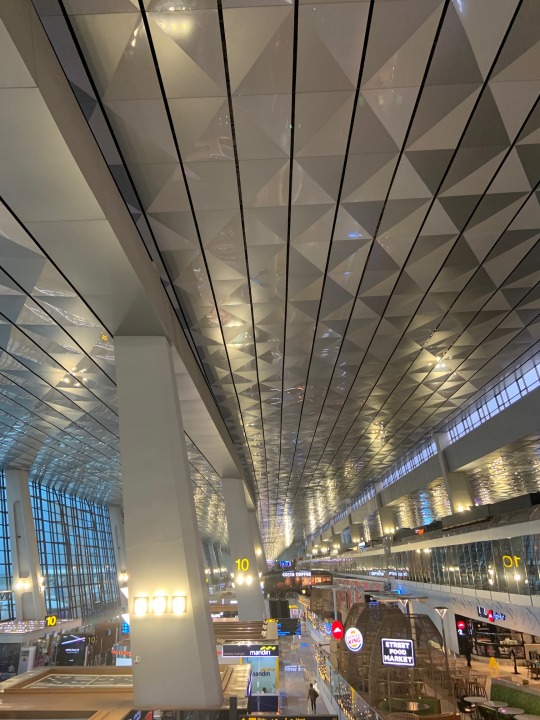
The ‘freshly baked’ issue here is the Corona Virus or COVID-19. It pictured on the less crowded airport and almost everyone here wore a mask. Honestly, my parents once considered to cancelled our trip regarding this issue (we bought the tickets on December, how could we know this would happen) but I said to them not to worry and be cautious instead (eat properly, exercise more, sleep well, take a vitamin, and step up your hygiene level). By the way, despite the issue, the immigration and health check here were not quite detailed i supposed. They were just checking your temp by using thermal scanner and that was it.
Anyhow back to the topic. We flew with SQ this time, so we’ll be having 9 hours layover time in Changi Airport before departed to Osaka. 9 hours at midnight must be a pain in the ass right? well. we’ll see.....
1,5 hours later we were arriving at Changi, well being the 7th straight year voted as the best airport in the world, I’m sure they must be having the best spot to sleep and rest well, and I’m not even lying. If you’re having a long midnight layover at Changi airport, esp Terminal 2, you have to go to their snooze lounge near gate E4, thank me later. Later around 2 am, some of the airport’s employee gave us free travel kit (towel, brush, toothbrush, pouch). Changi is really something, right?
Thu, Feb 27th 2020
Our flight scheduled at 8.20 am, without any delayed we flew to Kansai Int Airport or KIX and arrived at 3.40 pm later that day. As usual, the immigration was smooth and fast, again, no detailed health check here, just another thermal check camera. One thing I noticed about Japan’s airport was how fast the baggage claim is. Once we cleared with immigration, our baggage was already appeared in front of our eyes (compare to airport in Indo which could take ages).

Next quest: Get out and find a train to Kyoto.
A little information, Osaka has 2 airport; Itami Airport and Kansai Int Airport. If you’re planning on flying to Osaka, you’re most likely arrived in KIX since Itami is for domestic only.
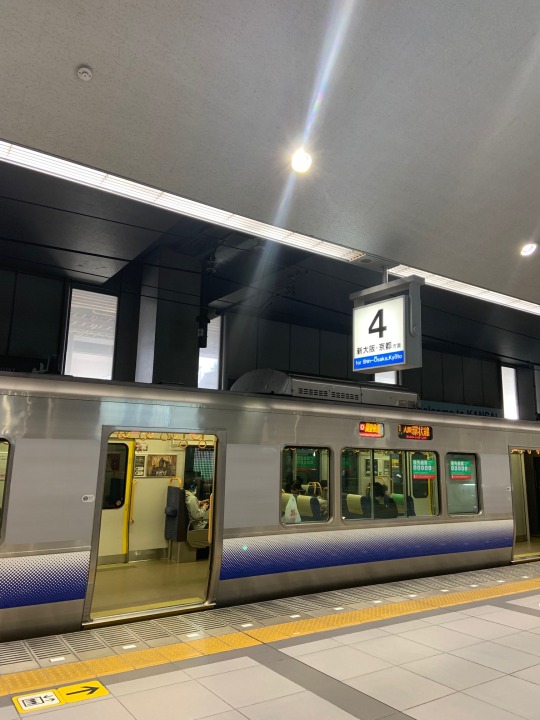
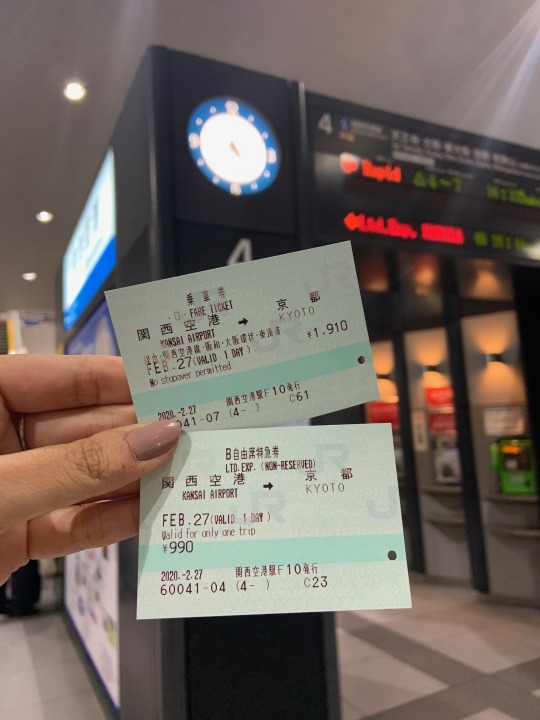
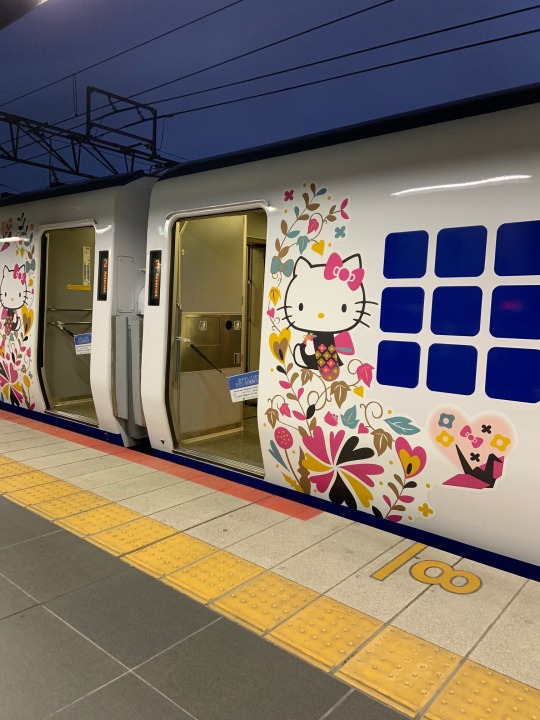
The central train station at KIX is located on 2F. There are so many trains (or buses) you could take from here. Since we were heading to Kyoto first, we decided to took JR Limited Express ‘Haruka’ which costed us 2900 yen (400.000) per person for 90 minutes ride. The train was comfortable and warm. Oh, I forget to mention it was 8 degree celcius in KIX when we arrived. It was a nice 90 min rode to Kyoto station. I did like the view which was vary from seaside Osaka bay, Kansai residential area, to a small farmland.
Once we arrived at Kyoto station (huge station with a modern architecture which i like), we were heading to our airbnb’s reception office nearby station. It was around 6 pm, light rain, 7 degree celcius (I wore clothes that only suitable in indo’s weather) and 4 big luggage. about 500 m, we arrived at the office thanks to google maps (my loyal servant here in Japan).

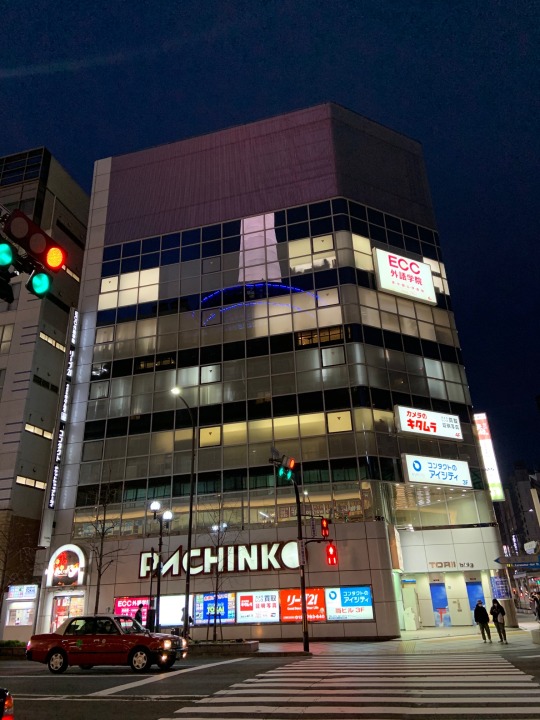
First, I want to talk about our Airbnb in Kyoto. I booked an apartment thru airbnb called RESI STAY and turned out this was a self-service hotel not an apartment per se. So we have to take out key at the office before actually check in to our room. I must said I’m very satisfied by their services. The friendly and responsive staff, and most importantly, they provide free shuttle to our building. What a service, right? and its fairly cheap! What a worth it purchase.
Our room was a large 1 bedroom apartment consist of 1 bathroom with its own dresser room, 1 separate toilet, 1 kitchen, 1 common room, and 1 bedroom with 2 large bunk beds. The flooring was carpet which was nice on cold winter days and most importantly, the room has 3 heater. 3 heater, i mean, it was more than enough! Our building located in Gojozaka street, a quiet neighborhood in Kyoto. But, its only 7 min to nearest station (Kiyomizu-gojo st), 1,5 km to Kiyomizu-dera, and 1,5 km to Gion district. Told you, so convenient right?
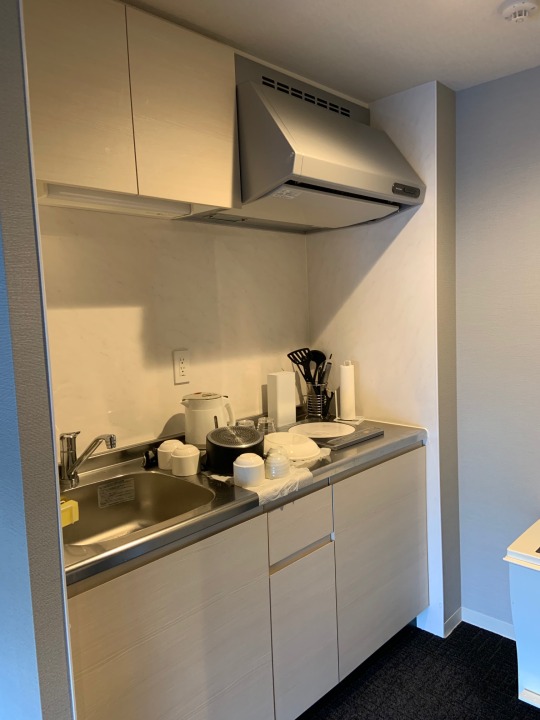
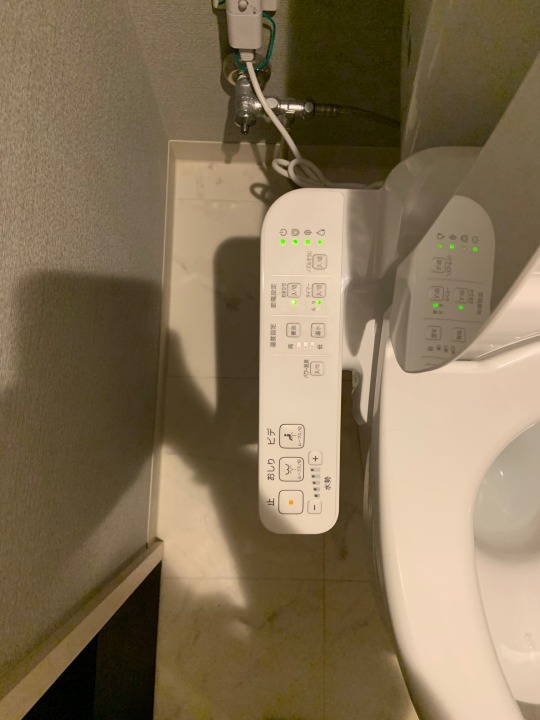
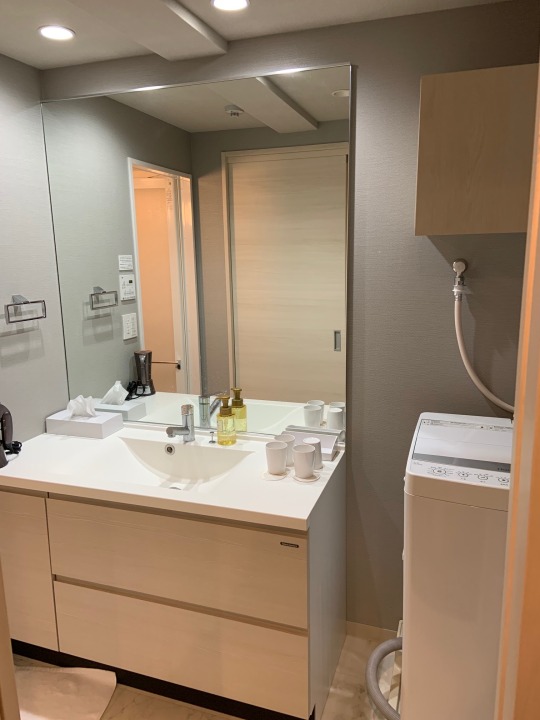

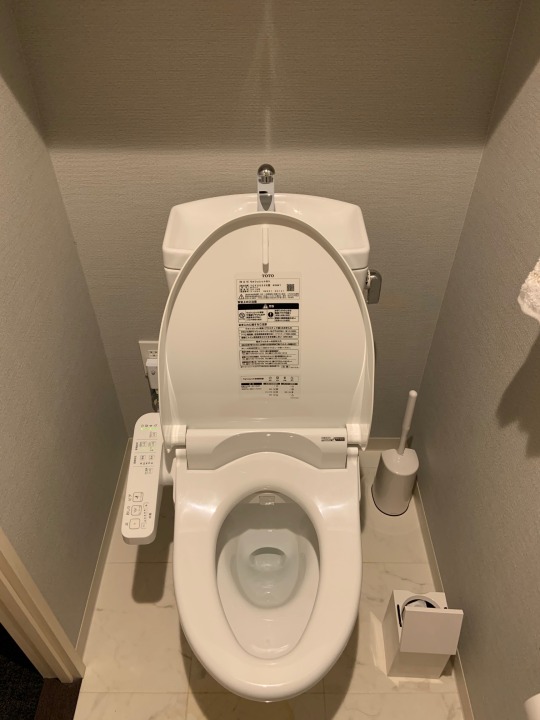

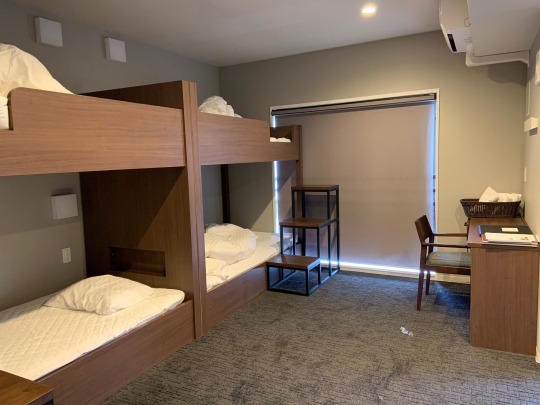
After a brief rest, we decided to grab some food at convenient store nearby which is a must whenever you visited Japan. Its around 9 pm, 4 degree celcius, We were heading to nearest 7 eleven. I must said Kyoto was less crowded than Tokyo, I barely saw people at that hour there. And another thing, I felt like there was more cars in Kyoto than Tokyo for some reason? idk for sure.
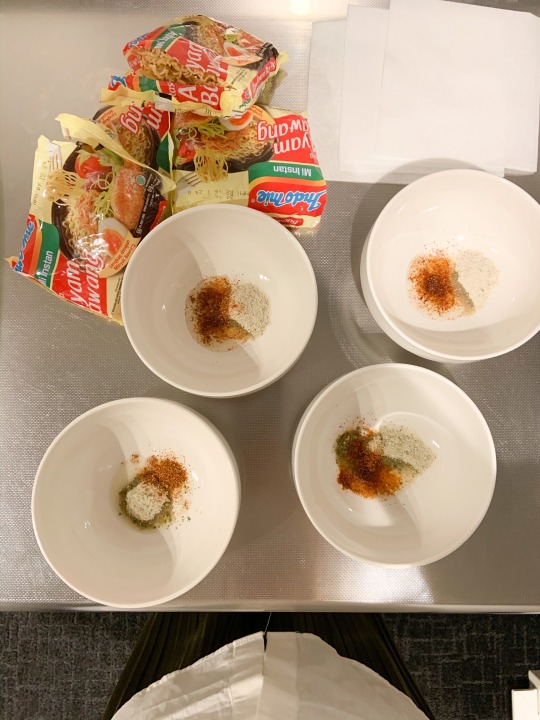
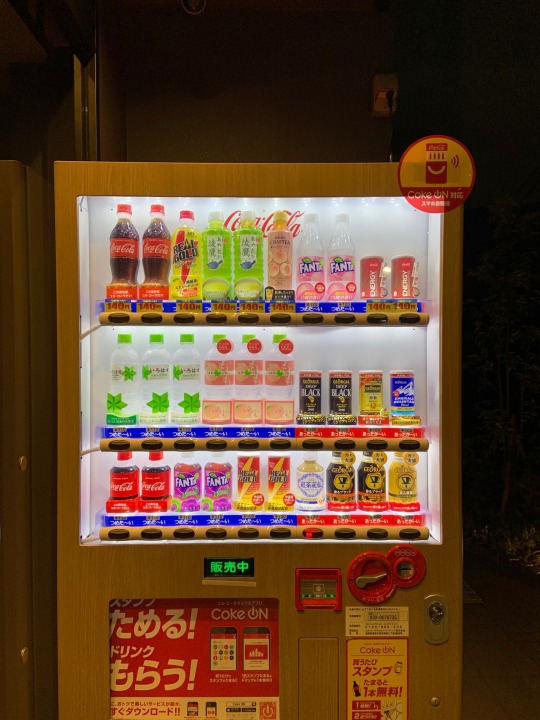
7 eleven time, did bought some beverages (lemon coca cola and royal king milk tea as usual), couple onigiri, some snacks, and yakitori. Strolling around randomly while traveling was my fav part of travel. Seeing other culture, different people with different habit fascinating me. And those night was one night I enjoyed for sure.
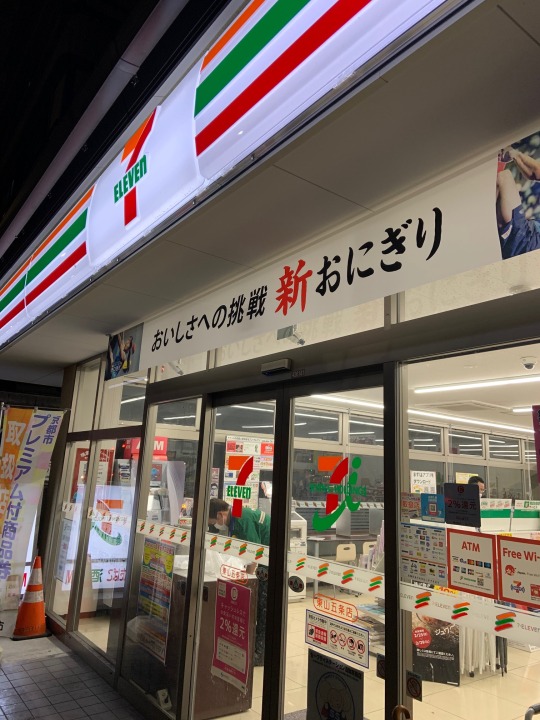

We still had 6 more days to explore and we were more than thrilled!
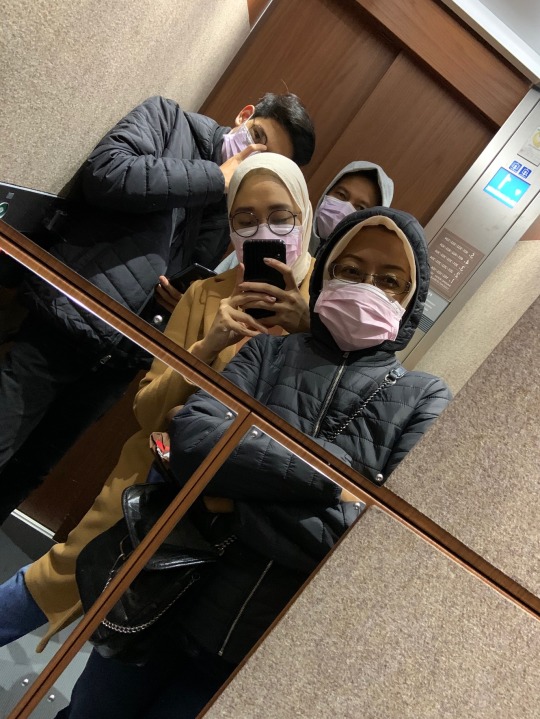
(to be continued)
1 note
·
View note
Text
electromagnetic spectrum.
- what is the spectrum? - uses of the different waves -

The electromagnetic spectrum is the range of frequencies of electromagnetic radiation and their respective wavelengths. It is a diagram that charts electromagnetic waves. Electromagnetic waves are waves that can travel through the emptiness of space, at the speed of light and are forms of radiation emitted by the sun.
USES:
Infrared:
Infrared light has frequencies which are absorbed by some chemical bonds. The internal energy of the bonds increases when they absorb infrared light, which causes heating. This makes infrared light useful for electrical heaters and for cooking food. Everything produces infrared light. The human eye cannot see this light, but infrared cameras can detect it. This is how thermal cameras work.
Ultraviolet:
Human eye can’t see ultraviolet (UV) light but it can have bad effects on the human body, the UV in sunlight can cause the skin to tan or burn. UV will kill bacteria and can be used for disinfecting water.
Electromagnetic waves in medicine:
Gamma rays are produced by changes in the nucleus of an atom. They are a form of nuclear radiation. High energy waves such as X-rays and gamma rays are transmitted through body tissues with very little absorption. This makes them ideal for internal imaging. X-rays are absorbed by dense structures like bones, which is why X-ray photos are used to help identify broken bones. X-ray imaging is also used for scanning the internal structure of objects and in airport security scanners. Gamma rays are used for sterilising food and medical instruments, and in the treatment and detection of cancer.
Ionising radiation:
Ultraviolet waves, X-rays and gamma rays are types of ionising radiation. They can add or remove electrons from molecules, producing electrically charged ions. Ionisation can have hazardous effects on the body: Ultraviolet waves can cause damage to skin cells and eyes, and increase the risk of skin cancer. X-rays and gamma rays can cause the mutation of genes, which can lead to cancer.
----- ABBIE
1 note
·
View note